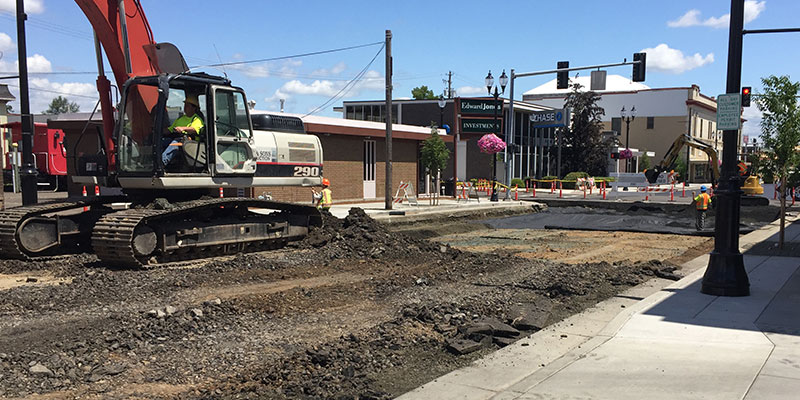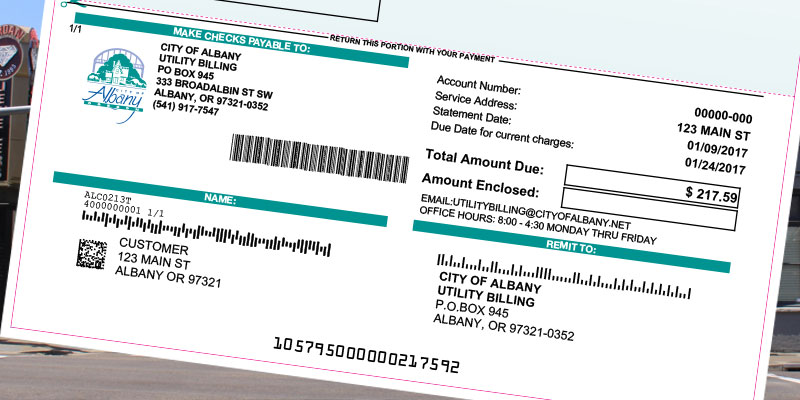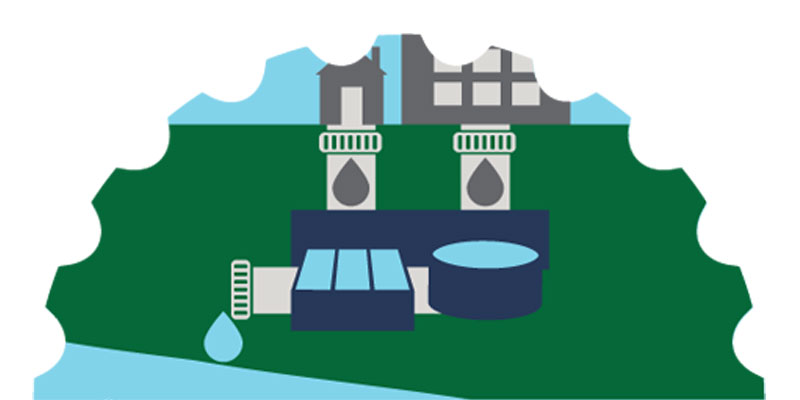The Cox Creek Interceptor project will provide capacity to reduce existing overflows and to handle peak buildout flows during a 5-year design storm event. With new additional capacity, surcharging in upstream sewer lines will be significantly reduced with a goal of eliminating unpermitted overflows from the sewer system. Construction of these improvements will also allow for continued property development in the upstream sewer basin and will also facilitate development downstream east of Interstate 5 (I-5).
This project will reduce long-term operations and maintenance costs through reduction in emergency responses and reduction in infiltrating groundwater that must be pumped and treated.

Phase 2
Completed
This project will replace approximately 1,400 feet of undersized pipe with new 24-inch and 30-inch sewer pipe.
Total Cost: $5,200,000
Master Plan: Sanitary Sewer Master Plan
Plan Element: P8
Category: Wastewater
Classification: Interceptors/Collectors
Department: Public Works
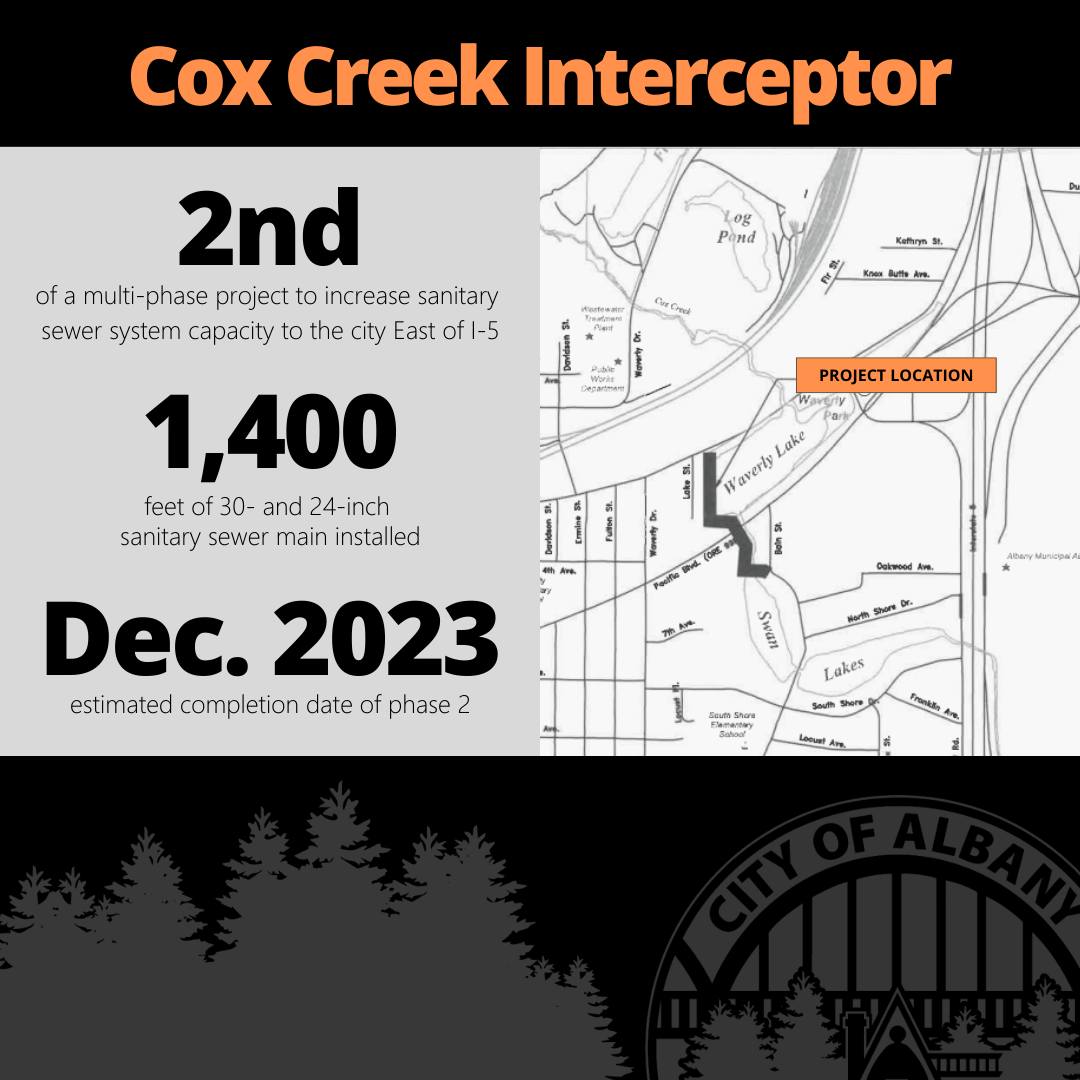
Phase 3
Under construction
This project will replace approximately 2,400 feet of undersized pipe with new 24-inch sewer pipe and extend approximately 500 feet of 24-inch sewer pipe across I-5.
Total Cost: $8,367,000
Master Plan: Sanitary Sewer Master Plan
Plan Element: P10A, P10B, P11A
Category: Wastewater
Classification: Interceptors/Collectors
Department: Public Works
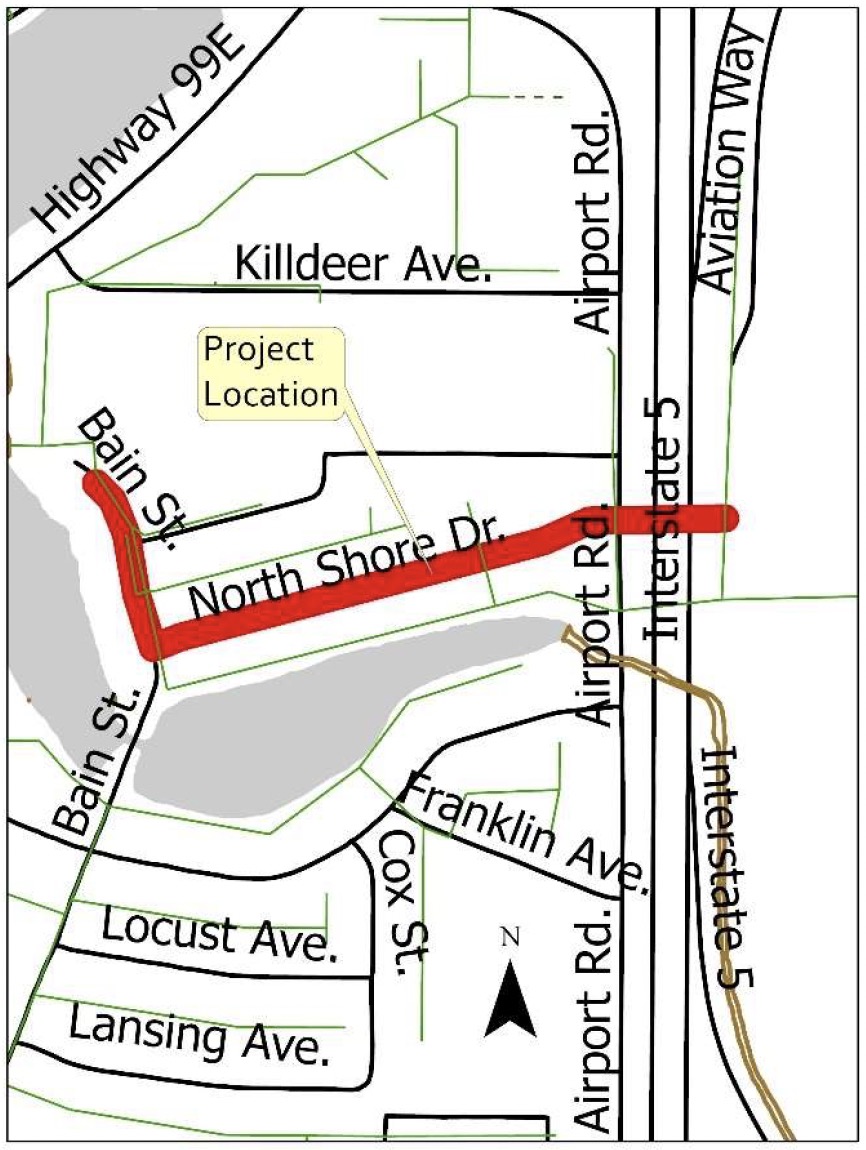
- Details
Nationwide, the Environmental Protection Agency (EPA) estimates that 50 percent of mercury entering publicly owned wastewater treatment facilities comes from amalgam discharged by dental practices. To reduce this toxic metal in treatment facilities, the EPA established federal requirements for dental practices to properly manage amalgam waste. These requirements are established in chapter 40 of the Code of Federal Regulations part 441 (commonly called the Dental Amalgam Rule).
Dental amalgam, a common filling material, is made mostly of mercury and a mixture of other heavy metals: silver, tin, copper, and zinc. When introduced into the environment, mercury from amalgam has a toxic effect on aquatic organisms. The Albany-Millersburg Water Reclamation Facility is not designed to remove mercury, so any mercury discharged from dental practices has the potential to enter the Willamette river. Controlling amalgam discharges from dental practices benefits the health of our rivers.
The City’s role
The EPA requires that the City of Albany implement the rule for dental practices that discharge wastewater to the publicly owned wastewater treatment facility.
Required Best Management Practices (BMPs):
- Install, operate, and maintain an approved amalgam separator.
- Inspect the amalgam separator(s), at a minimum, once per month to ensure proper operation and confirm that there is no bypass of the separator.
- Repair or replace defective amalgam removal equipment/components in accordance with the manufacturer’s specifications.
- Maintain the amalgam separator(s) regularly by replacing retaining cartridges, separator canisters, filters, and/or other treatment units annually, or whenever the unit reaches the manufacturer’s design capacity, whichever comes first.
- Do not use oxidizing or acidic cleaners to flush dental unit water lines.
- Collect scrap amalgam from chair-side traps, screens, vacuum pump filters, dental tools, and/or other collection devices for off-site disposal. Scrap amalgam must not be flushed down the drain.
- Maintain logs documenting amalgam separator maintenance activities and waste amalgam disposal.
- Maintain records for three years of the handling and disposal of amalgam, maintenance, and service of amalgam separators, and also keep records of x-ray fixer recycling.
- Follow the Oregon Dental Association’s Best Management Practices of Dental Waste.
The role of dental practices
Who is required to implement BMPs?
- All dental practices that place or remove amalgam, such as offices, large dental institutions, schools, and clinics.
Who is exempt from BMPs?
- Dental specialty practices like oral pathology, oral and maxillofacial radiology or surgery, orthodontics, periodontics, or prosthodontics.
- Mobile units.
- Dental practices that do not place or remove amalgam except in limited, emergency, unplanned, or unanticipated circumstances.
All dental practices are required to submit a one-time compliance report even if you are exempt from BMPs:
Compliance Report for Dental Dischargers (40 CFR 441.50)
Please complete the report and submit via email to:
This email address is being protected from spambots. You need JavaScript enabled to view it.
or by mail to:
City of Albany
Environmental Services
310 Waverly Drive NE
Albany, OR 97321
Program contact:
541-791-0058
Related links and resources:
- EPA Mercury in Dental Amalgam
- EPA Fact Sheet: Effluent Limitations, Guidelines, and Standards for Dental Offices
- Oregon Dental Association – Amalgam Recycling Information
- Oregon Dental Association Website
- Dental Rule, 40 CFR Part 441
- Oregon DEQ Dental Rule Compliance
- Details
When area rivers, creeks, and streams experience high water, the City of Albany places sand and bags at locations around town for resident use. Please bring your own shovel.
North Albany
Louise Street (off North Albany Road)
South Albany
Grand Prairie Park parking lot
Public Works Operations
Davidson St @ Front Ave (NE corner of the intersection)

- Details
- Details
Subcategories
Engineering
Engineering is responsible for the master planning, construction management, and transportation system planning services for the Public Works Department. They also oversee the utility services for the city including water and sewer service.

